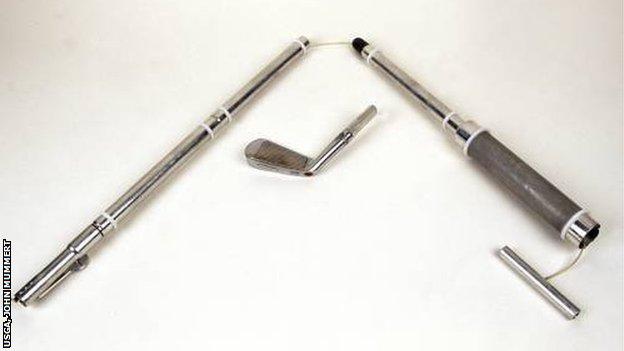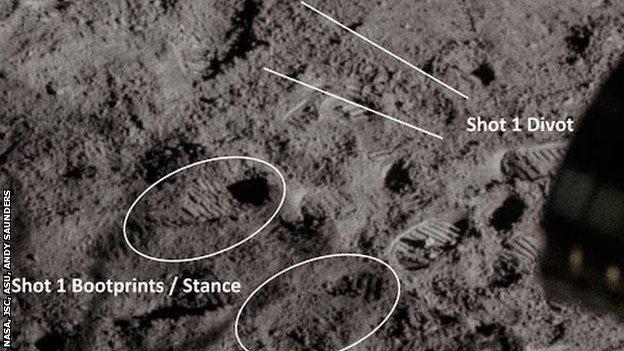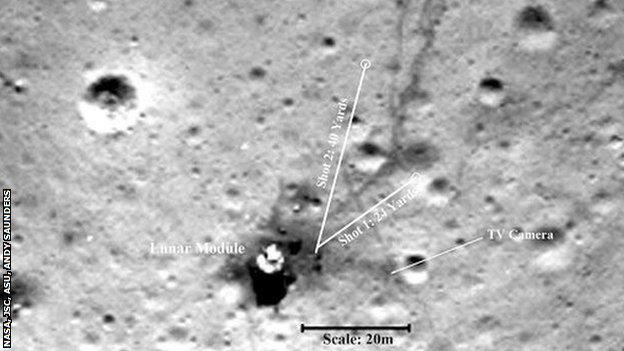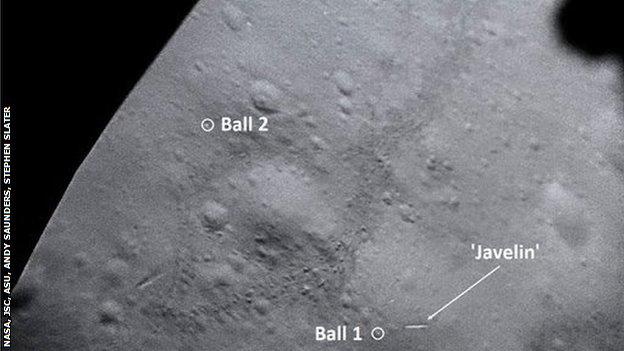Images reveal length of Moon golf shot
Astronaut Alan Shepard famously claimed he hit his ball “miles and miles and miles” on the Moon in 1971 – 50…


Fifty years ago this week, Alan Shepard famously hit two golf balls on the Moon.
The first he shanked into a crater. The second he claimed to have smashed “miles and miles and miles”.
Now, while all golfers are prone to hyperbole, Shepard, who was commander of Nasa’s Apollo 14 mission, could well have hit his ball that far on 6 February 1971 – despite only using a makeshift six iron that he had fashioned out of a collapsible tool designed to scoop lunar rock samples, and which he had sneaked aboard in a sock.

The only footage that exists is grainy video shot side-on from one television camera. And there was no ball-tracking technology.
But imaging specialist Andy Saunders has digitally enhanced recent high-resolution scans of the original photographic film, and applied a stacking technique on smaller 16mm ‘movie’ footage shot by the crew.
And not only did he manage to find the second ball, which had not been seen in 50 years, he also worked out how far it actually went.
The Moon’s reduced gravity would certainly have helped and Saunders says big-hitting US Open champion Bryson DeChambeau could, theoretically, blast a ball 3.41 miles in the rarefied air – pretty much the length of an 18-hole golf course – with a hangtime of one minute and 22 seconds, were he to take his quest for more distance to extreme lengths.
So, how far did Shepard manage to hit his ball?

“We can now fairly accurately determine that ball number one travelled 24 yards, and ball number two travelled 40 yards,” says Cheshire-based Saunders, who has been working with the United States Golf Association (USGA) to mark the anniversary.
“Unfortunately, even the impressive second shot could hardly be described as ‘miles and miles and miles’, but of course this has only ever been regarded as a light-hearted exaggeration.”

While those distances may appear underwhelming, it is still an astonishing feat by Shepard, who in 1961 was the first American to travel into space, a decade before he became the fifth man to walk on the moon.
“The moon is effectively one giant, unraked, rock-strewn bunker,” continues Saunders.
“The pressurised suits severely restricted movement, and due to their helmet’s visors they struggled to even see their feet.
“I would challenge any club golfer to go to their local course and try to hit a six-iron, one-handed, with a one-quarter swing out of an unraked bunker.
“Then imagine being fully suited, helmeted and wearing thick gloves. Remember also that there was little gravity to pull the clubhead down toward the ball.
“The fact that Shepard even made contact and got the ball airborne is extremely impressive.”

Andy Saunders is an imaging specialist and author of the upcoming book Apollo Remastered. Having previously produced the clearest ever image of Neil Armstrong on the Moon, and revealed life on board the stricken Apollo 13 mission, he regularly shares the remastered images on social media. Follow him on Twitter: @AndySaunders_1 and Instagram: @andysaunders_1




